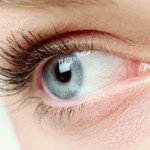Treating Dark Circles and Puffiness Under The Eye Area
 Under eye circles and puffiness under the eye can work together to create a tired appearance, making a young face look old and an older face appear even older. Many women obsess about under eye problems such as dark circles or puffiness under the eye, creating a market for an endless and confusing array of products, including creams, gels, concealers, brighteners and rollerballs.
Under eye circles and puffiness under the eye can work together to create a tired appearance, making a young face look old and an older face appear even older. Many women obsess about under eye problems such as dark circles or puffiness under the eye, creating a market for an endless and confusing array of products, including creams, gels, concealers, brighteners and rollerballs.
Lower lid blepharoplasty, which removes excess under eye skin and fat is a tried, true and well respected surgical option, but other nonsurgical fixes are also available. Hyaluronic acid, marketed as Restylane, Juvederm and other soft tissue fillers, can be injected into the tear trough (crescent-shaped under eye area) to rejuvenate the appearance of the under eye area.
What causes dark circles?
Many factors contribute to dark circles, but the common denominator is heredity and genetics. Most frequently, dark circles are created by volume loss in the under eye area that exposes the orbital bone, creating a hollow trough that shows up as a dark circle. The delicate eye area, with its extremely thin skin, is one of the first spots to reveal signs of aging.
Dilated blood vessels that sit close to thin under-eye skin are another cause of dark circles. Airborne allergens, which cause blood to pool in the vessels under the skin, can worsen the appearance of dark circles (treatment for this may be as simple as an antihistamine pill), as does sun exposure. Aging, which causes skin to thin, can darken the eye area, as can certain medications such as birth control pills, which can dilate blood vessels.
Advantages of injecting soft tissue fillers in the under eye area
The overall aim for soft tissue filler injections in the under eye area is to improve rhytids (wrinkles) and thinning under eye skin (which leads to sagging), and to decrease bulging under eye fat as well as the tear trough depression.
In the early 90s, plastic surgeons began to use fat, which was removed during blepharoplasty, to fill in the tear trough depression. This usually led to swelling for several weeks and occasional problems with lumpiness in the lower eyelids. With Restylane or Juvederm, if you are unhappy with results, you don't have to wait. Results can be altered with Hyaluronidase; this product dissolves and degrades the hyaluronic acid product to reverse the results of the injections. Soft tissue fillers may not only add volume to the depression of the tear trough, but can also be used to thicken the anterior lamella (lower eyelid skin and orbicularis muscle) of the lower eyelid, which can in turn hide a lot of the aging changes underneath.
Success of under eye injections depends on the skills of the injector
Injecting dermal fillers under the eye is a very "technique-dependent" procedure.
If you're young, with significant tear-trough deformities, your problems are not due to thinning. A 22-years-old has a nice thick dermis, but may have a volume problem, so your practitioner may use a fairly deep injection technique. If you have severe tear-trough deformities and a lot of thinning of the soft tissues, your physician may use a "sandwich technique," putting a large, thin, superficial sheet above the orbicularis oculi muscle (closes the eye) and then a similar sheet immediately below the orbicularis oculi, making a sandwich out of that muscle between sheets of the filler. This allows for more product in the area and also allows for more thickening of the soft tissues, which helps to hide a lot of the underlying aging problems across the entire lower orbit.
Bottom line: Find a physician who is board-certified in an appropriate specialty and then make sure that he or she has a long history of performing this procedure.
Who is the ideal candidate for under eye injections?
- If you have a significant excess of bulging lower eyelid fat, you are not a good candidate. You would probably do better with a lower-lid blepharoplasty.
- Any age is appropriate.
- Men and women are both appropriate. Women usually have a little more problem with thinning of the dermis; however, as men age, they have this problem too.
Fillers are also appropriate if you have had a previous lower eyelid surgery and now appear too hollow. Fillers can restore volume nicely. For an older patient with almost translucent skin, fillers will not result in a perfectly smooth eyelid. The goal may be to decrease the apparent depth of the tear trough.
If you are looking for something very long lasting you may be a good candidate for blepharoplasty.
How will you look following this procedure?
Your lower eyelids will not look good for about three days after treatment; this is not a zero-downtime procedure. You may not look perfect after three days, but you should probably feel comfortable being seen. The small lumps or bumps are typically visible for a few days but they are almost always gone by 10 days or two weeks.
Choose a skilled, board-certified dermatologist, plastic surgeon, or ophthalmic surgeon who is experienced in under eye injections. Results last about eight months.